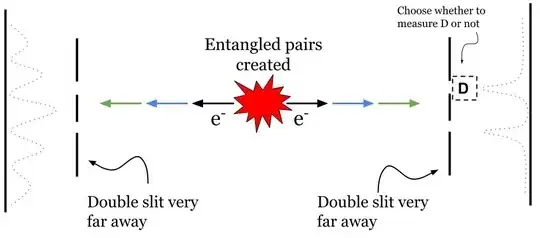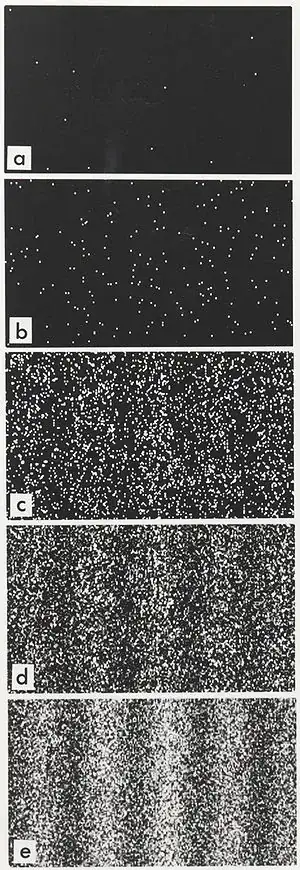I know this is probably not possible to use to communicate via EPR, so my question is why?
I create electron entangled pairs using pair production or some other method, (each color pair is an entangled pair) we send millions of those pairs toward two double slits separated far from each other. The person on the right side can decide to measure which slit the electron went through using detector D (which ruins the interference pattern) or they can decide to not measure which retains the interference pattern. This would seemingly also ruin or maintain the interference pattern for the person on the left side.
 If the source of electrons is streaming continuously, the person on the right could send a message by using dot dash for "interference on" or "interference off" during short 1 second intervals.
If the source of electrons is streaming continuously, the person on the right could send a message by using dot dash for "interference on" or "interference off" during short 1 second intervals.
Again, I presume this would not work, so why exactly? And please don't say "because you can't communicate faster than light." What would specifically go wrong in this set up that would not make it work as described? Thanks!
